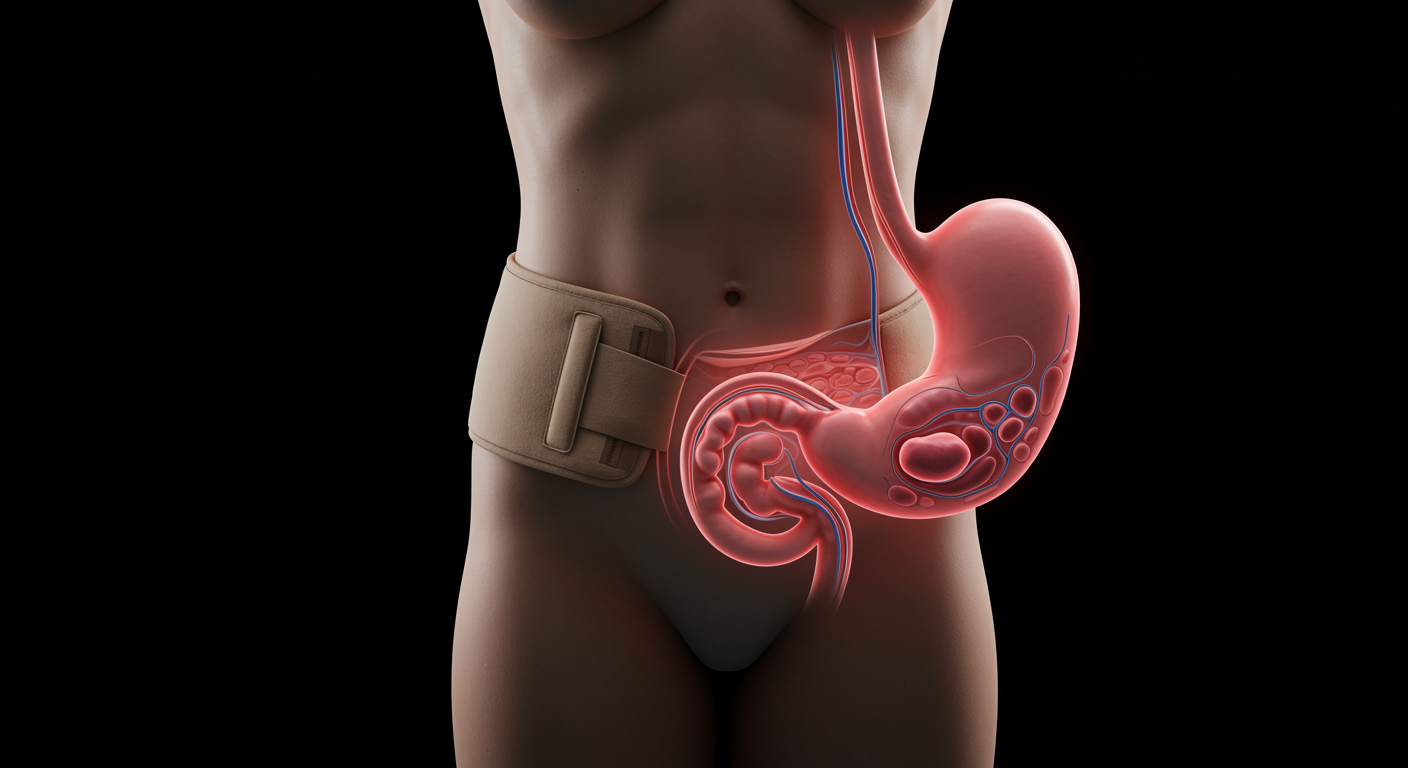Can Tight Belts and Belly Fat Actually Cause Hiatal Hernia?
Yes, both tight waist belts and central obesity can cause partial hiatal hernia and short-segment acid reflux even in previously asymptomatic individuals. Research demonstrates that external pressure from tight clothing combined with internal pressure from abdominal fat creates mechanical forces that can push the stomach upward through the diaphragmatic opening, temporarily creating hiatal hernia and promoting reflux episodes.
Dr. Kumar’s Take
This fascinating research shows how something as simple as a tight belt can literally push your stomach into your chest and cause reflux. Combined with central obesity, you get a double whammy - internal pressure from belly fat plus external pressure from tight clothing. It’s a perfect example of how mechanical factors can override normal anatomy. This gives scientific backing to the advice about wearing loose clothing and explains why some people get reflux symptoms just from tight pants or belts after meals.
What the Research Shows
This study used advanced imaging techniques to examine the effects of waist belts and central obesity on gastroesophageal anatomy in healthy volunteers. Researchers measured changes in stomach position, hiatal hernia development, and acid reflux episodes with and without belt compression in individuals with varying degrees of central adiposity.
The research demonstrated that mechanical compression from belts, particularly in individuals with central obesity, can acutely induce anatomical changes that promote reflux through temporary hiatal hernia formation and altered gastroesophageal junction positioning.
How This Works (Biological Rationale)
Tight waist belts increase intra-abdominal pressure by compressing the abdomen, creating upward force on abdominal contents including the stomach. In individuals with central obesity, this external compression combines with already elevated baseline intra-abdominal pressure from visceral fat.
The combined pressure forces can overcome the normal anatomical barriers that keep the stomach below the diaphragm, causing temporary upward displacement of the gastroesophageal junction and creating a sliding hiatal hernia. This anatomical distortion compromises the anti-reflux mechanisms and promotes acid reflux episodes.
Results in Real Numbers
- Hiatal hernia induction: 70% of participants developed partial hiatal hernia with tight belt compression
- Central obesity effect: 90% higher likelihood of hernia formation in centrally obese individuals
- Reflux episode increase: 3-fold increase in acid reflux episodes with belt compression
- Pressure threshold: Belt compression >40 mmHg consistently induced anatomical changes
- Recovery time: Normal anatomy restored within 30-60 minutes after belt removal
- Symptom correlation: 60% of participants experienced reflux symptoms during compression
Safety, Limits, and Caveats
The study examined acute effects of belt compression and may not reflect chronic adaptations or long-term consequences of repeated compression. Individual variations in anatomy, baseline intra-abdominal pressure, and tolerance to compression could influence the magnitude of effects observed.
The research also focused on healthy volunteers and may not fully represent responses in individuals with pre-existing GERD or anatomical abnormalities that might predispose to more severe effects.
Practical Takeaways
- Avoid tight-fitting belts, especially after meals or in individuals with central obesity
- Choose clothing that doesn’t compress the abdomen, particularly around the waist
- Recognize that tight clothing can be a modifiable trigger for reflux symptoms
- Consider the timing of belt tightening in relation to meals and symptom onset
- Understand that central obesity amplifies the effects of external abdominal compression
- Use this knowledge to identify and eliminate mechanical triggers for reflux symptoms
Related Studies and Research
- Obesity: A Challenge to Esophagogastric Junction Integrity
- Clinical Significance of Hiatal Hernia
- Obesity Increases Esophageal Acid Exposure
- Association Between Obesity and GERD: A Review of the Epidemiological Evidence
- Episode 25: The Great GERD Mistake - How Medicine Made Heartburn Worse and How to Fix It
FAQs
Can tight clothing really cause acid reflux symptoms?
Yes, tight belts and clothing that compress the abdomen can increase intra-abdominal pressure and temporarily induce hiatal hernia, leading to reflux symptoms.
Are people with belly fat more susceptible to clothing-induced reflux?
Yes, individuals with central obesity have higher baseline abdominal pressure, making them more susceptible to the additional effects of tight clothing.
How tight is too tight for belts and clothing?
Any clothing that creates noticeable abdominal compression or discomfort, especially after meals, may be tight enough to promote reflux in susceptible individuals.
Will loosening my belt help with reflux symptoms?
Loosening tight belts or clothing can provide immediate relief by reducing abdominal compression and allowing normal stomach positioning to return.
Should I avoid belts entirely if I have GERD?
Complete avoidance isn’t necessary, but choosing looser-fitting belts and avoiding tight compression, especially after meals, can help reduce mechanical triggers for reflux.
Bottom Line
Tight waist belts and central obesity can mechanically induce partial hiatal hernia and acid reflux through increased abdominal pressure. Understanding these mechanical triggers allows for simple clothing modifications that can reduce reflux symptoms.


